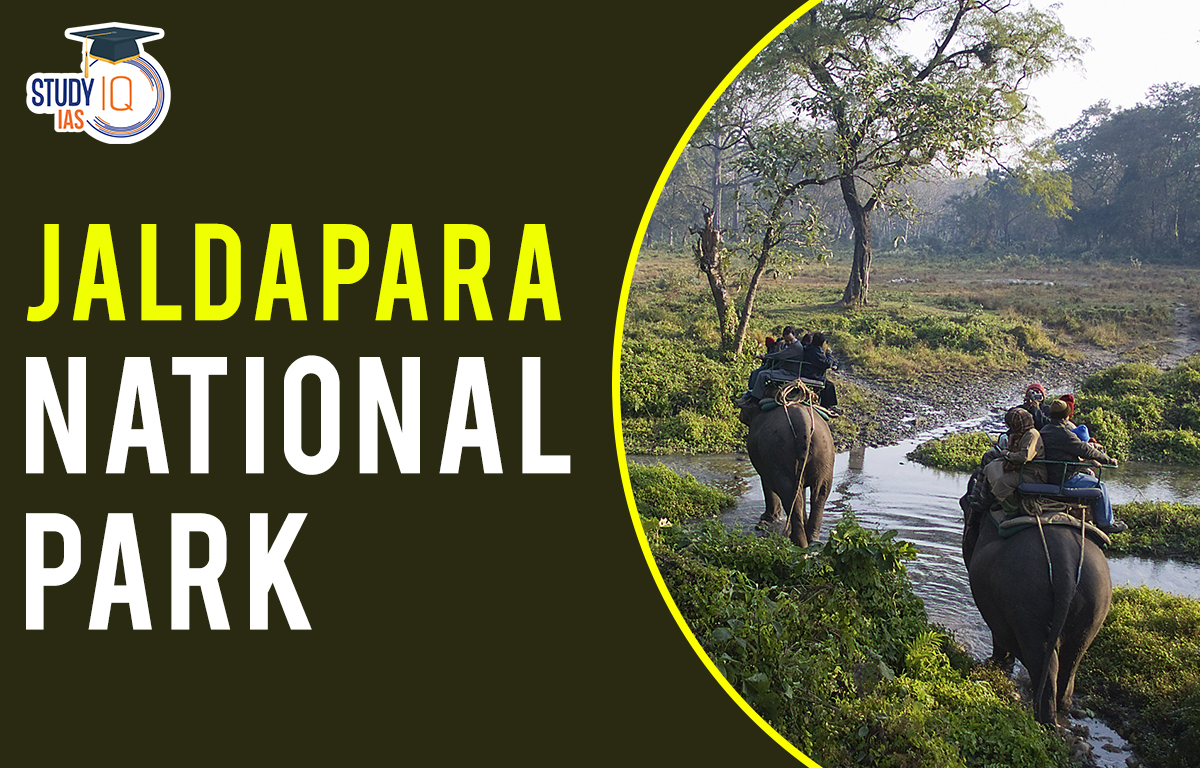Table of Contents
Jaldapara National Park
The Jaldapara National Park has a significant ecological impact and a wealth of species. Previously, it was referred to as the Jaldapara Wildlife Sanctuary. The second-largest home for the critically endangered great one-horned rhinoceros is currently Jaldapara National Park. The UPSC Syllabus includes Jaldapara National Park and all national parks as a significant topic of Environment subject. The UPSC Mock Test can help candidates prepare for the exam with more precision.
Jaldapara National Park History
Toto and Mech tribes lived in the Jaldapara National Park prior to 1800. As a result, the area was given the name Totopara. In fact, the settlement and market known by the name Jaldapara are located in the southernmost part of the forest. This West Bengal national forest is situated in the Eastern Himalayan foothills. About 124 kilometres from Siliguri, it is located on the Torsa River in the Alipurduar Subdivision of Jalpaiguri.
In order to safeguard its unique fauna, especially the Indian one-horned rhinoceros, it was made a sanctuary in 1941. The Indo-Gangetic plains were home to the earliest rhino community. The rhinos become geographically separated as a result of habitat loss. They currently live in Jaldapara National Park. 2014 saw the designation of the Jaldapara Wildlife Sanctuary as a National Park. The Gorumara National Park encircles the park, and the Chilapata Forest contains the remains of an old fort.
Also Read: Valley of Flowers National Park
Jaldapara National Park Location
The Jalpaiguri region of West Bengal is home to Jaldapara National Park. The woods of Jaldapara extend from the Mthurabagan tea plantation in the south to the Bhutan border at Totopara in the north. Crossing the northern boundary of the woodland is National Highway 317. In the past, the vicinity of this roadway was the centre of tourist action.
At a height of 61 meters, Jaldapara is surrounded by 216.51 km2 of extensive grasslands, woodlands, wetlands, and riverine forests. The forest covers about 50 kilometres. However, for the majority of the route, the woodland is narrow and only 5 to 7 km broad. On the side of the Torsa River, the park is situated in the Eastern Himalayan foothills. Additionally, the rivers Malangi, Chirakhawa, Sissamara, Hollong, and Kalijhora run through the sanctuary.
Also Read: Dachigam National Park
Jaldapara National Park Climate
This national park’s temperature varies from 12 to 27 °C. It gets a lot of rain during the monsoon, which enables a wide range of plants and flowers to flourish. In the summer, the park’s temperatures can reach a high of 40 °C. As a result, Jaldapara sees a spike in tourism at the beginning of the summer and during the winter.
Jaldapara National Park Flora
The wildlife and vegetation found in the Jaldapara National Park are varied. Particularly after the monsoon season, the region is awash in flowers and vegetation. Shishu and khair plants can be found in the Jaldapara National Park. Additionally, there are long grasses, reeds, ferns, and palmgrass, known as Setaria palmifolia.
Jaldapara National Park Fauna
Asiatic one-horned rhinos are among the rhinos found in Jaldapara, which is well renowned for its rhino population. For rhinos to survive over the long run, they need a natural environment, which the grass marsh offers. Bison, hispid hares, hog deer, sambar, wild boars, and spotted deer groups are also present in Jaldapara. Asian elephants live in the national forest as well.
The park is home to many different types of animals, including hawks, Bengali floricans, Indian hornbills, jungle fowls, peafowl, partridges, and others. Eagles like the fishing eagle and the crowned eagle can also be seen. The crested snake eagle, the Pallas’s fishing eagle, the large green-billed malkoha, the White-rumped vulture, the Pied harrier, the Sparrow hawk, and the Hill mynas are a few other birds.
Jaldapara National Park UPSC
Outside of Assam and Nepal, the Jaldapara National Park functions as a gene pool reserve for the great one-horned rhino. Jaldapara is situated at a height of 61 meters. It is located close to the Eastern Himalayan foothills in northern West Bengal’s Alipurduar District along the shores of the Torsa River. The sanctuary is home to a variety of wildlife and lush vegetation. Students can read all the details related to UPSC visiting the official website of StudyIQ UPSC online Coaching.


 Daily Quiz 19 April 2025
Daily Quiz 19 April 2025
 Vehicle-to-Grid (V2G) Technology and its...
Vehicle-to-Grid (V2G) Technology and its...
 Waqf Act (Amendment) 2025: Key Highlight...
Waqf Act (Amendment) 2025: Key Highlight...





















